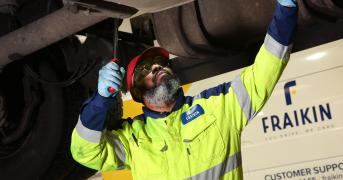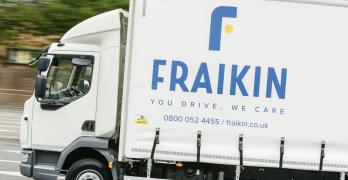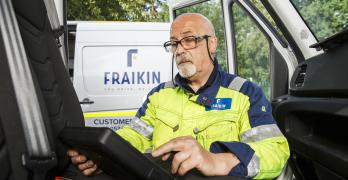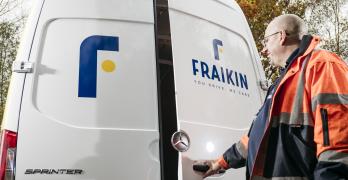The DVSA’s New LCV Enforcement Strategy: What You Need To Know
- 27/08/25
- 3 min
Utilising data that highlighted persistent issues and growing risks associated with light commercial vehicles (LCVs), the Driver and Vehicle Standards Agency (DVSA) has announced it will be rolling out a new approach designed to improve both safety and compliance.
With more than 5.5 million LCVs on UK roads – operated by sole traders through to major commercial fleets – John Penny, Fraikin's Compliance & Training Manager explains how this update is relevant to a vast array of businesses.

Why LCVs are being prioritised?
The DVSA already checks approximately 20,000 LCVs annually and, staggeringly, 50% of these inspections result in enforcement action for serious defects, insecure loads or significant overloads. This points to a widespread problem with maintenance and operational standards.
MOT failure rates for LCVs have also caught the DVSA’s attention, given that this figure is roughly four times higher than for HGVs, as well as significantly worse than for passenger car.
In addition, in 2023/24 there were 3,000 vehicle incidents reported involving an LCV which sadly resulted in either a serious injury or a fatality, compared to 1,000 for HGVs. Though there are many more LCVs than HGVs on our roads, this is still a cause for concern. When combined with the other persistent infringements, LCVs were firmly in the DVSA’s spotlight.
What the new approach entails
The agency has evaluated where its enforcement efforts will be most effective, targeting certain industries or sectors where its work is most needed.
For example, it noticed an increased number of prohibitions for vehicles used in construction, and those used for transporting cars. Therefore, these vehicle types will be treated with a higher priority moving forwards.
Of course, enforcement for all other sectors will continue, with robust action taken where appropriate, including issuing fines, sanctions and further penalties.
As with the roll out of any new strategy, the DVSA has been in close contact with relevant trade associations and key industry players to ensure the rules and guidance on remaining compliant are clear.
What operators should do?
Though most owners and operators already strive for compliance, there are a few recommendations that businesses can bear in mind:
- Ensure cargo is properly restrained and evenly distributed to avoid dangerous shifts during transit.
- Carry out regular inspections, alongside timely servicing and repairs, to prevent defects that could lead to enforcement action.
- Adopt preventative maintenance practices and structured safety checks – common practice in the HGV sector – to help avoid further potential issues.
How can Fraikin help?
As a trusted partner to stakeholders throughout the automotive industry, our team fully understands the pressures operators face. Whether you're managing a fleet or running a single van, our services are designed to support compliance and reduce risk:
- Contract hire and rental: Gain access to modern, well-maintained vehicles that meet all current safety standards, with full maintenance, servicing and repairs support.
- Fleet management: Benefit from proactive maintenance scheduling, compliance tracking, and real-time vehicle monitoring of your existing vehicle fleet.
- Expert support: Let our team help you understand the new guidance to ensure you implement best practices across your operation.
Staying ahead of regulatory changes is easier with the right partner. If you're concerned about compliance or want to review your current fleet strategy, we’re here to help.
Also worth reading

Labour’s Autumn Budget Uncertainty Highlights the Value of Contract Hire

Driver walkaround checks: Why they matter and how Fraikin is making them easier

